The Hybrid CMO/CTO Advantage: The Complete Guide to Fractional Executive Leadership
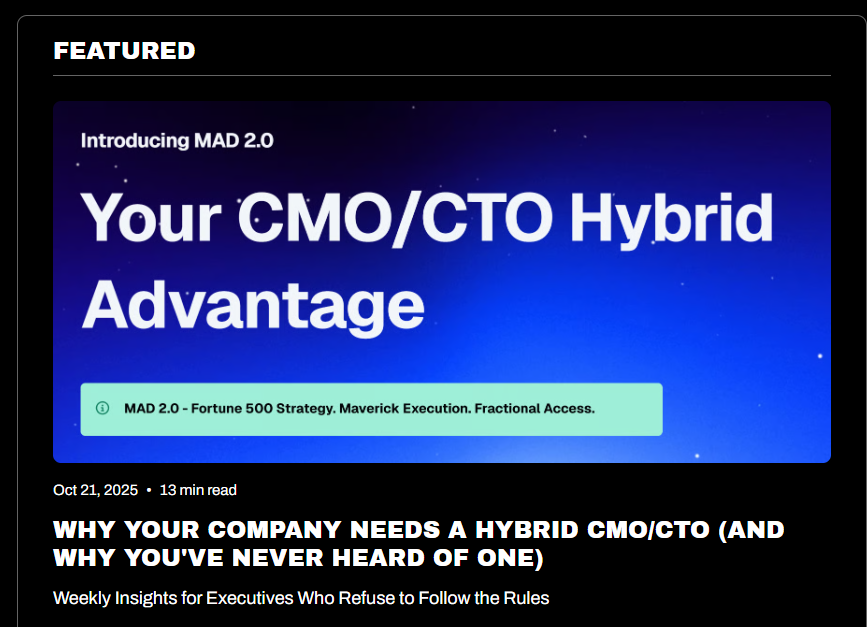
The Hybrid CMO/CTO Advantage: The Complete Guide to Fractional Executive Leadership
Why combining marketing strategy and technical execution creates unfair competitive advantage in today's digital-first business environment
By Charles "The Marketing Maverick" Davis
Fractional CMO/CTO | 25+ Years Technology & Marketing Leadership
Table of Contents
- Executive Summary
- What Is a Fractional CMO/CTO?
- The Problem: Why Traditional Models Are Failing
- What's the Difference Between CMO and CTO Responsibilities?
- Can One Person Do Both CMO and CTO Roles?
- When Does a Company Need a Hybrid CMO/CTO?
- The Cost-Value Analysis: Why Boards Should Care
- Business Disruption Signals That Require Hybrid Leadership
- The Proactive vs. Reactive Framework
- Disaster Recovery: The Wisconsin Voices Case Study
- The Preferred Vendor Strategy
- Forest vs. Trees: Why Siloed Thinking Kills Companies
- Fractional CMO for Startups vs. Established Companies
- How Much Does a Fractional CMO Cost?
- Why Hire a Fractional CMO/CTO Instead of Full-Time?
- Fractional CMO Services: What You Actually Get
- Fractional CMO Jobs: The Talent Market Reality
- Comparison Matrix: When to Choose What
- Implementation Framework
- Conclusion: Life Rewards Originals, Not Copies
Executive Summary
Every business today is fundamentally a digital media company operating in a rapidly changing environment. This reality requires skills not normally found in one person—until now.
The hybrid fractional CMO/CTO model combines three critical disciplines into one strategic leadership role:
- Brand Strategy - Market positioning and messaging that creates competitive advantage
- Digital Strategy - Technology infrastructure and platform selection
- Digital Execution - Implementation and operational oversight
The Bottom Line for Boards:
- Cost: One fractional executive vs. three full-time salaries
- Value: Integrated strategic thinking that prevents the disasters caused by siloed decision-making
- Timing: Proactive oversight that avoids reactive crisis management
- Risk Mitigation: Someone who speaks both marketing language and technical systems
This comprehensive guide answers every question about fractional CMO/CTO positioning and provides the framework for boards, executives, and companies to make informed decisions about their leadership structure.
What Is a Fractional CMO/CTO?
Fractional CMO Meaning
A fractional CMO (Chief Marketing Officer) is a senior marketing executive who works with companies on a part-time, contract, or project basis rather than as a full-time employee. The term "fractional" refers to working a fraction of full-time hours while delivering C-level strategic marketing leadership. Many companies start by exploring fractional CMO services before realizing they need integrated leadership.
What does fractional CMO mean in practice?
- Strategic marketing leadership without full-time salary and benefits
- Experienced executive expertise at a fraction of the cost
- Flexible engagement that scales with company needs
- Multiple companies benefit from one expert's knowledge
-
Fractional CTO Meaning
A fractional CTO (Chief Technology Officer) provides technical leadership, system architecture, and technology strategy on a part-time or contract basis. They guide technology decisions, infrastructure, security, and digital transformation without requiring a full-time executive salary.
The Hybrid CMO/CTO Definition
A hybrid fractional CMO/CTO combines both roles into one integrated leadership position. This professional understands:
- How marketing technology stacks work (not just what they promise)
- How brand strategy requires technical infrastructure to scale
- How digital transformation impacts both customer experience and operational systems
- How to prevent the communication breakdowns that occur when marketing and technology teams speak different languages
Critical insight: This isn't about finding someone with two job titles. It's about finding someone whose experience spans both domains—someone who has lived in both worlds and understands how they integrate.
The Problem: Why Traditional Models Are Failing
The Fundamental Shift
Twenty years ago, marketing and technology were separate domains:
- Marketing focused on messaging, advertising, brand positioning, and customer relationships
- Technology focused on infrastructure, systems, operations, and data management
Today, these domains have collapsed into each other. Modern marketing IS technology:
- Marketing automation platforms
- Customer data platforms (CDPs)
- Content management systems
- Social media algorithms
- AI-powered personalization
- Digital advertising platforms
- E-commerce infrastructure
- Analytics and attribution systems
The Communication Breakdown
In my 25 years navigating technology systems—from IBM mainframes to international digital transformation—I've watched this pattern repeat:
The CMO says: "We need to implement this marketing automation platform."
The CTO says: "That won't integrate with our existing systems."
Result: Months of delays, wasted budget, finger-pointing.
The CTO says: "We're rebuilding our website infrastructure."
The CMO says: "But that will break all our SEO work and tracking."
Result: Launch disaster, lost revenue, brand damage.
The Real Cost of Siloed Thinking
Companies operating with separate, siloed CMO and CTO functions face:
- Translation Tax: Every strategic decision requires translation between marketing language and technical language, slowing execution
- Integration Failures: Marketing tools that don't work with existing systems
- Budget Waste: Buying technology that can't deliver promised marketing results
- Blind Spots: Marketing strategies that ignore technical limitations; technical decisions that ignore marketing implications
- Competitive Disadvantage: While you're coordinating between silos, your competitors are executing integrated strategies
The forest and trees problem: Teams are so focused on their individual domain (the trees) that they miss how the entire system works together (the forest). They don't see how to adapt solutions from other industries because they're trapped in their silo.
What's the Difference Between CMO and CTO Responsibilities?
Traditional CMO Responsibilities
The Chief Marketing Officer traditionally owns:
Strategy & Planning:
- Brand positioning and messaging
- Market research and customer insights
- Go-to-market strategy
- Competitive analysis
- Product marketing
Execution & Operations:
- Campaign development and execution
- Content strategy and creation
- Customer acquisition and retention
- Public relations and communications
- Marketing budget management
Performance & Analytics:
- Marketing metrics and KPIs
- Customer journey mapping
- Conversion optimization
- ROI measurement
- Market performance reporting
Team & Partnerships:
- Marketing team leadership
- Agency relationships
- Vendor management
- Cross-functional collaboration
Traditional CTO Responsibilities
The Chief Technology Officer traditionally owns:
Technology Strategy:
- Technical vision and roadmap
- Infrastructure architecture
- Platform and tool selection
- Technology budget allocation
- Innovation and R&D
Systems & Operations:
- System reliability and performance
- Security and compliance
- Data management and governance
- DevOps and automation
- Technical debt management
Development & Execution:
- Software development oversight
- Product engineering leadership
- Quality assurance
- Release management
- Technical project delivery
Team & Partnerships:
- Engineering team leadership
- Technology vendor relationships
- Technical hiring and talent development
- Cross-functional technical collaboration
The Overlap Zone: Where Hybrid Leadership Matters
Here's what traditional role definitions miss—the critical overlap zone where most modern business happens:
Marketing Technology Stack:
- Who selects it? Marketing wants features, Technology needs integration
- Who implements it? Marketing owns the strategy, Technology owns the execution
- Who maintains it? Marketing needs it to work, Technology keeps it running
- Who measures it? Marketing wants campaign data, Technology needs system data
Digital Transformation:
- Website and e-commerce platforms
- Customer data infrastructure
- Analytics and tracking implementation
- API integrations
- Performance optimization
- Security and compliance for customer data
Digital Media Operations:
- Social media platform management
- Content delivery networks
- Email infrastructure and deliverability
- Video and multimedia hosting
- Mobile app development and maintenance
AI and Automation:
- Marketing automation platforms
- AI-powered personalization
- Chatbots and customer service automation
- Predictive analytics
- Content generation and optimization
This overlap zone is where businesses win or lose in 2025. And it's where having separate CMO and CTO leadership creates the most friction, delays, and expensive mistakes.
Can One Person Do Both CMO and CTO Roles?
The Credential Trap
The conventional wisdom says no. The thinking goes:
- "You need a dedicated CMO with 15 years of marketing experience"
- "You need a dedicated CTO with deep technical expertise"
- "One person can't possibly have both skill sets"
This is credential-based thinking. And it's wrong.
Experience Over Credentials
Here's what matters: Experience actually integrating both domains.
I started with IBM mainframes at age 16. Twenty-five years later, I had:
- Built 6-figure IT career starting with 12 weeks of training (vs. expensive degree)
- Survived the MCI/Worldcom collapse and housing crash
- Worked on the International Harvester to Navistar corporate rebrand
- Managed technology infrastructure for major corporations
- Navigated system administration, project management, capacity planning, performance tuning
- Rebuilt my career as an international digital nomad
The Navistar rebrand taught me something critical: Corporate rebranding is a system transformation that touches technology infrastructure, employee psychology, market positioning, and operational workflows simultaneously.
You can't separate the marketing from the technology. They're the same system.
The Real Question
Can one person do both roles? Wrong question.
Right question: Can you find someone whose experience spans both domains—who has lived in both worlds and understands how they integrate?
Answer: Yes. But they're rare. And they don't come from traditional paths.
The Hybrid Profile
A true hybrid CMO/CTO has:
- Technical Foundation: Real experience building, managing, and troubleshooting technology systems—not just using marketing tools
- Marketing Fluency: Understanding of brand strategy, customer psychology, market positioning—not just technical implementation
- Systems Thinking: Ability to see how all the pieces fit together and impact each other
- Pattern Recognition: Experience across industries and companies that reveals what actually works vs. theoretical best practices
- Contrarian Perspective: Willingness to challenge conventional wisdom when it doesn't fit the actual problem
Critical distinction: This isn't a technical person who learned some marketing, or a marketing person who learned some tech. This is someone who has operated at a strategic level in BOTH domains.
When One Person Can't Do It
There are scenarios where you need separate leaders:
- Enterprise scale (Fortune 500): The coordination overhead justifies dedicated roles
- Highly specialized technical products: Where the CTO needs to be a deep domain expert
- Complex regulatory environments: Where compliance requires dedicated technical leadership
- Rapid scale phase: Where managing two large teams exceeds one person's capacity
But for most companies—especially in transition, crisis, or growth phases—the hybrid approach delivers better outcomes at lower cost with faster execution.
When Does a Company Need a Hybrid CMO/CTO?
The Proactive Answer
In today's business environment, it's good business practice to get solid direction when faced with major decisions or crisis.
Fortune 500 companies understand this. They don't wait until they need a consulting firm—they pre-vet preferred vendors before they need them. They have relationships in place so when crisis hits or opportunity emerges, they can move immediately.
The same principle applies to executive leadership. Smart boards don't wait for the crisis to start looking for strategic guidance.
Critical Inflection Points
Companies need hybrid CMO/CTO leadership at these specific moments:
1. Digital Transformation
Scenario: Your business model is shifting from traditional to digital-first operations.
Why hybrid matters: Digital transformation isn't a technology project or a marketing project—it's both simultaneously. The CMO needs to understand how technical constraints affect customer experience. The CTO needs to understand how technical decisions affect brand perception.
Real cost of getting it wrong: Companies spend millions on technology platforms that don't deliver marketing results, or launch marketing strategies that break technical systems.
2. Major Rebranding or Market Repositioning
Scenario: You're changing your brand identity, entering new markets, or pivoting your business model.
Why hybrid matters: As I learned working on the Navistar rebrand, corporate rebranding touches everything—visual identity, messaging, technology infrastructure, data systems, employee communications, customer touchpoints. Miss the technology layer and your rebrand launch fails.
Real cost of getting it wrong: Brand launches that work in presentations but break in production. Customer confusion because digital touchpoints don't match the new brand. Wasted creative investment because technical systems can't support the vision.
3. Post-Crisis Recovery or Market Disruption
Scenario: Your company survived a market crash, regulatory change, competitive disruption, or internal crisis. Now you need to rebuild strategically.
Why hybrid matters: Recovery requires integrated thinking. You can't rebuild marketing without fixing technical systems. You can't rebuild technical systems without understanding market positioning. The coordination overhead of separate leaders slows recovery when speed matters most.
Real cost of getting it wrong: Slow recovery gives competitors time to take market share. Piecemeal fixes that don't address root system problems. Wasted resources on initiatives that don't align.
4. Startup or Scale-Up Phase
Scenario: You're a startup that can't afford two C-level salaries, or a scale-up that needs strategic leadership but not yet full-time executives.
Why hybrid matters: Early-stage companies need strategic thinking without the overhead of full-time executive salaries and benefits. A hybrid fractional CMO/CTO gives you both strategic domains for a fraction of the cost.
Real cost of getting it wrong: Startups that build technology platforms that can't support marketing needs. Marketing strategies that promise features engineering can't deliver. Misalignment that kills companies before they reach product-market fit.
5. M&A Integration
Scenario: You've acquired a company or merged with another organization. Now you need to integrate systems, brands, and operations.
Why hybrid matters: M&A integration is a massive system integration problem that spans technology, brand, culture, and operations. Having one person who sees the full picture prevents the territorial battles that kill integrations.
Real cost of getting it wrong: Failed integrations where acquired companies never fully merge. Cultural clashes that drive talent away. Technology incompatibilities that prevent operational synergies. Destroyed brand value from poor integration planning.
6. Market Expansion or International Growth
Scenario: You're expanding into new geographic markets or international territories.
Why hybrid matters: International expansion requires understanding how technology infrastructure works in different regions (compliance, hosting, payment systems, data sovereignty) AND how brand messaging adapts across cultures and languages.
Real cost of getting it wrong: Marketing campaigns that violate regional regulations. Technology platforms that don't work in target markets. Brand messaging that doesn't translate culturally.
7. Technology Stack Overhaul
Scenario: Your technology infrastructure is outdated, insecure, or can't support business growth. You need to modernize.
Why hybrid matters: Technology decisions have massive marketing implications. Platform changes affect SEO, customer data, analytics, personalization, and every digital touchpoint. A CTO who doesn't understand marketing will make technically sound decisions that destroy marketing performance.
Real cost of getting it wrong: Website migrations that tank SEO rankings. Platform changes that lose customer data. System upgrades that break marketing automation. Technical decisions that set marketing back 12-18 months.
8. Disaster Recovery and Business Continuity
Scenario: You've experienced a security breach, data loss, system failure, or organizational crisis that threatens operations.
Why hybrid matters: As the Wisconsin Voices case study demonstrates (detailed in its own section), disaster recovery requires both technical systems knowledge AND understanding of brand/reputation implications. Most companies don't realize how many organizational risks sit at the intersection of marketing and technology until disaster strikes.
Real cost of getting it wrong: See Wisconsin Voices case study below—organizations that fire teams without securing digital assets, companies that can't recover social media accounts, lost intellectual property, destroyed brand reputation, and extended operational paralysis.
The Preferred Vendor Strategy
Here's the contrarian insight most companies miss: You should identify and vet your hybrid CMO/CTO BEFORE you need one.
Fortune 500 companies maintain preferred vendor lists. They don't start searching for consulting firms when crisis hits—they already know who they'll call.
Apply the same strategic thinking to executive leadership:
Proactive Approach:
- Identify potential fractional CMO/CTO partners while things are stable
- Have preliminary conversations about your business model and growth plans
- Establish the relationship so if crisis or opportunity emerges, you can activate immediately
- Get them on your "preferred vendor list" for strategic guidance
Benefits:
- Speed: When you need strategic guidance, you're not starting from scratch
- Trust: The fractional executive already understands your business context
- Cost: You're not paying full-time salary while you figure out if you need ongoing support
- Flexibility: Activate engagement when needed, scale down during stable periods
- Insurance: Strategic advisor available for major decisions without long-term commitment
The reactive alternative: Wait until you're in crisis, then spend weeks searching for qualified candidates, onboarding them to your business context, and hoping they can solve problems quickly enough. This is expensive, slow, and risky.
The Cost-Value Analysis: Why Boards Should Care
The Traditional Full-Time Model
Scenario 1: Separate CMO and CTO
Typical full-time executive compensation:
- CMO salary: $180,000 - $300,000+
- CTO salary: $200,000 - $350,000+
- Benefits (30%): $114,000 - $195,000
- Equity/Bonuses: $50,000 - $200,000+
- Recruiting costs: $40,000 - $80,000 per role
Total annual cost: $584,000 - $1,125,000+ for two executives
Hidden costs:
- Coordination overhead between two leaders
- Translation tax (time spent explaining marketing to tech and vice versa)
- Decision delays while achieving alignment
- Integration failures when strategies conflict
- Political/territorial battles
Time to value: 6-12 months for each hire to reach full productivity
The Fractional Hybrid Model
Scenario 2: One Hybrid Fractional CMO/CTO
Typical fractional executive engagement:
- Monthly retainer: $8,000 - $20,000 (varies by scope and company size)
- Annual cost: $96,000 - $240,000
- Benefits: None (contractor)
- Recruiting costs: Minimal (established consultants have proven track records)
Total annual cost: $96,000 - $240,000
Cost savings: $488,000 - $885,000+ annually (60-80% reduction)
Hidden value:
- Zero coordination overhead (one person, one integrated strategy)
- No translation tax (fluent in both marketing and technology language)
- Faster decisions (no alignment meetings required)
- Integrated strategy from day one
- No political battles
Time to value: 30-60 days (experienced fractional executives hit the ground running)
The Three-Role Consolidation Value
But here's the real competitive advantage: A hybrid fractional CMO/CTO actually consolidates THREE traditional roles:
- Chief Marketing Officer: Brand strategy, market positioning, customer acquisition
- Chief Technology Officer: System architecture, infrastructure, security
- VP of Marketing Technology: The person who normally translates between marketing and IT
Traditional approach total cost:
- CMO: $180,000 - $300,000
- CTO: $200,000 - $350,000
- VP MarTech: $140,000 - $220,000
- Benefits (30%): $156,000 - $261,000
Total: $676,000 - $1,131,000 for three full-time positions
Fractional hybrid approach: $96,000 - $240,000
Cost savings: $436,000 - $891,000 annually (65-79% reduction)
ROI Scenarios
Let's look at real return on investment for different company situations:
Startup/Scale-Up (Sub-$10M Revenue)
Challenge: Can't afford two C-level executives, but needs strategic leadership in both marketing and technology.
Traditional approach:
- Hire mid-level marketing manager: $90,000
- Hire mid-level tech lead: $120,000
- Total: $210,000
- Result: Tactical execution without strategic guidance
Fractional approach:
- Hybrid CMO/CTO: $120,000 annual retainer
- Savings: $90,000
- Result: C-level strategic thinking in both domains
ROI:
- Avoid costly platform mistakes (typical cost: $50,000 - $200,000)
- Faster market entry (time saved: 3-6 months)
- Better positioning from day one (customer acquisition improvement: 20-40%)
Total value: $200,000 - $500,000 in first year
Mid-Market Company ($10M-$100M Revenue)
Challenge: Growth has created complexity. Marketing and technology teams aren't aligned. Need strategic leadership but questioning if two full-time executives are necessary.
Traditional approach:
- CMO: $220,000
- CTO: $250,000
- Benefits: $141,000
- Total: $611,000
Fractional approach:
- Hybrid CMO/CTO: $180,000 annual retainer
- Savings: $431,000
ROI:
- Eliminate integration failures (typical cost: $100,000 - $400,000 per incident)
- Reduce coordination overhead (time saved: 15-20% of each team)
- Faster strategic decisions (opportunity cost of delays: $50,000 - $200,000)
- Better technology selection (avoid wrong platform investments: $200,000 - $500,000)
Total value: $350,000 - $1,100,000 in first year
Enterprise in Transition ($100M+ Revenue)
Challenge: Going through major change—digital transformation, rebranding, market disruption, M&A integration. Need immediate strategic guidance but don't want long-term hiring commitment until transformation is complete.
Traditional approach:
- Two consulting firms (marketing + technology): $400,000 - $1,000,000+
- OR hire two full-time executives during uncertain period: $700,000 - $1,000,000
Fractional approach:
- Hybrid CMO/CTO for transformation period (12-18 months): $180,000 - $300,000
- Can scale up or down as transformation progresses
ROI:
- Integrated transformation strategy (failed transformations cost: $1M - $10M+)
- Faster transformation timeline (each month of delay costs: $100,000 - $500,000)
- No long-term commitment if transformation requires different leadership
- Knowledge transfer to internal teams
Total value: $1,000,000 - $5,000,000+ over transformation period
The Proactive vs. Reactive Cost Analysis
Here's the cost comparison that matters most to boards:
Reactive Approach (waiting until crisis):
- Crisis occurs (immediate cost: highly variable, often millions)
- Rush to find consultant/executive (recruiting/vetting time: 4-12 weeks)
- Onboarding and business context learning (time: 4-8 weeks)
- Strategy development and implementation (time: 8-12 weeks)
- Total time to value: 4-8 months
- Crisis continues during this period, compounding costs
Proactive Approach (preferred vendor relationship):
- Establish relationship before crisis ($0 if just vetting, minimal if small retainer)
- Crisis occurs
- Activate engagement immediately (time: 0-1 week)
- Executive already knows your business context
- Strategy development and implementation (time: 4-8 weeks)
- Total time to value: 1-2 months
- Crisis addressed 3-6 months faster
Value of proactive approach:
- 3-6 months faster crisis response
- Opportunity cost savings: $300,000 - $3,000,000+ (depending on company size and crisis severity)
- Reduced crisis impact on brand, operations, and revenue
Board-Level Decision Framework
When evaluating the fractional hybrid CMO/CTO model, boards should ask:
- Strategic Integration: Do our marketing and technology strategies currently align, or do we see friction and delays at the intersection?
- Cost Structure: Are we getting full value from two separate C-level executives, or could we achieve better outcomes with integrated leadership?
- Transformation Risk: Are we facing major changes where having separate marketing and technology leadership creates coordination risk?
- Time to Value: Can we afford the 6-12 month ramp-up time for full-time executive hires, or do we need faster strategic impact?
- Flexibility: Do we need permanent full-time leadership, or would fractional engagement give us strategic guidance with better cost structure and flexibility?
- Proactive Positioning: Have we identified strategic advisors before we need them, or are we operating reactively?
The bottom line for boards: The fractional hybrid CMO/CTO model delivers better strategic integration, faster time to value, significant cost savings, and reduced risk—especially during periods of change, growth, or uncertainty.
Business Disruption Signals That Require Hybrid Leadership
Modern businesses face rapid, unpredictable disruption. The companies that survive have integrated strategic leadership that can see around corners and respond quickly. Here are the specific disruption signals that demand hybrid CMO/CTO thinking:
1. AI Transformation
The Disruption: Artificial intelligence is fundamentally changing how businesses operate, how customers interact with brands, and how competitive advantage is created.
Why CMOs fail alone: CMOs see AI as a marketing tool (chatbots, personalization, content generation) but miss the infrastructure and data requirements. They promise AI-powered experiences that technology teams can't deliver.
Why CTOs fail alone: CTOs see AI as a technical implementation (models, APIs, compute resources) but miss the brand voice, customer psychology, and strategic positioning implications. They build technically impressive systems that don't serve business goals.
Why hybrid leadership works:
- Understands AI requires both technical infrastructure AND strategic brand positioning
- Can evaluate AI vendors for both technical capabilities and marketing outcomes
- Sees how AI changes the entire customer experience, not just isolated touchpoints
- Positions AI implementation as integrated business transformation, not separate marketing and technology projects
Real example: Company wants AI-powered personalization. CMO selects a platform based on marketing features. CTO discovers it requires customer data infrastructure that doesn't exist. Project stalls for 6-12 months while data architecture is rebuilt. Competitors who had integrated leadership ship working personalization in 8 weeks.
2. Market Collapse or Economic Disruption
The Disruption: Sudden market downturns, industry collapses, or economic crises that require immediate strategic pivots.
Context: I survived the MCI/Worldcom collapse and the housing crash. Here's what I learned: Companies that survive market disruption have leaders who can see both the immediate operational response AND the long-term strategic repositioning.
Why CMOs fail alone: Focus on brand preservation and messaging without understanding which technical systems can be cut vs. which are critical infrastructure. Marketing initiatives that technology budget can't support.
Why CTOs fail alone: Focus on infrastructure and cost-cutting without understanding how technical decisions affect brand perception and customer relationships. Cut systems that destroy marketing capabilities.
Why hybrid leadership works:
- Makes strategic cuts that preserve both operational capability and brand value
- Sees which technology investments enable recovery vs. which are optional
- Understands which customer touchpoints must be maintained vs. which can be paused
- Coordinates operational response with brand messaging
Disruption indicators:
- Industry-wide revenue decline >20%
- Major competitor bankruptcy or market exit
- Fundamental shift in customer behavior or buying patterns
- Supply chain disruptions affecting core operations
3. Government-Led Disruption
The Disruption: Major policy changes, regulatory mandates, tariffs, or government intervention that fundamentally alters business models.
Historical examples:
- AT&T divestiture: Government-mandated breakup of telecommunications monopoly
- USPS opening: Allowing private competition in postal services
- GDPR and privacy regulations: Fundamentally changed how companies collect and use customer data
- Tariffs: Sudden cost changes affecting international operations and pricing
Why CMOs fail alone: Create marketing strategies that violate new regulations or ignore compliance requirements. Promise customer experiences that legal/technical constraints prevent.
Why CTOs fail alone: Implement technical solutions to meet compliance without understanding how they affect customer experience and brand perception. Make customers jump through hoops for legal compliance instead of integrating compliance seamlessly.
Why hybrid leadership works:
- Sees how regulatory changes affect both technical infrastructure AND customer communication
- Designs compliance solutions that maintain brand experience
- Coordinates legal requirements with customer messaging
- Identifies competitive opportunities created by regulatory change (while others just comply)
Current example: Privacy regulations require consent management. CTO implements technically compliant solution with poor user experience. Customers abandon site rather than navigate complex consent dialogs. Competitors with hybrid thinking design seamless consent that actually increases trust.
4. Tariff and Trade Disruption
The Disruption: Sudden tariff changes affecting manufacturing, import/export, pricing, or supply chain.
Why CMOs fail alone: Try to maintain pricing and positioning without understanding the technical and operational constraints created by tariff changes. Create messaging that operations can't support.
Why CTOs fail alone: Solve the operational and technical challenges of tariff compliance without considering how changes affect brand positioning and customer perception.
Why hybrid leadership works:
- Coordinates pricing strategy with operational capabilities
- Sees how supply chain changes affect both costs AND brand perception
- Identifies when tariff changes create repositioning opportunities
- Communicates changes to customers in ways that maintain trust
5. Digital Transformation Requirements
The Disruption: Business models shifting from physical to digital operations, or digital-first competitors disrupting traditional industries.
Reality check: Every business today is fundamentally a digital media company. If you don't see your company this way, you're already behind.
Why CMOs fail alone: Design digital experiences that require technical capabilities the company doesn't have. Promise features that engineering can't deliver in required timeframe.
Why CTOs fail alone: Build technically sound platforms that ignore customer psychology, brand requirements, and market positioning. Create digital experiences that work technically but fail in market.
Why hybrid leadership works:
- Sees digital transformation as integrated business model change, not separate projects
- Coordinates technical capabilities with market positioning
- Designs digital experiences that serve both user needs and technical constraints
- Manages change across technology, operations, brand, and culture simultaneously
Asia Pacific example: In Asia, individuals are using social media platforms like QVC and Home Shopping Network—live streaming product sales directly to consumers. This is FREE underpriced attention that traditional retailers are missing because they think of social media as a marketing channel (CMO thinking) rather than a sales infrastructure (CTO thinking). Hybrid leaders see it as both and capture the opportunity.
6. Competitive Disruption from New Technology
The Disruption: New technology platforms or capabilities that change competitive dynamics in your industry.
Pattern: When new technology emerges, first-movers get attention. But the winners are usually the companies that integrate the technology into their full business model—not just bolt it on.
Why CMOs fail alone: Get excited about new technology's marketing potential without understanding implementation complexity. Promise adoption timelines that engineering can't meet.
Why CTOs fail alone: Dismiss marketing hype and miss legitimate competitive threats. Wait for technology to "mature" while competitors capture market position.
Why hybrid leadership works:
- Evaluates new technology for both marketing potential AND technical feasibility
- Makes strategic bets on timing (when to be first-mover vs. fast-follower)
- Integrates new technology into business model rather than treating it as add-on
- Sees when new technology creates repositioning opportunity vs. when it's distraction
7. Downsizing and Centralization Trends
The Disruption: Economic pressures forcing companies to reduce headcount and centralize operations.
Current trend: Businesses are in downsizing centralization mode. This creates both operational challenges and strategic opportunities.
Why CMOs fail alone: Maintain marketing ambitions without understanding the technical and operational constraints of smaller teams. Continue strategies that require resources company no longer has.
Why CTOs fail alone: Cut technical capabilities based on cost without understanding marketing impact. Eliminate systems that are critical to customer experience and brand delivery.
Why hybrid leadership works:
- Makes strategic cuts that maintain competitive position with reduced resources
- Identifies which technical capabilities enable marketing efficiency (keep these)
- Sees which marketing initiatives can be automated vs. which require human touch
- Centralizes operations in ways that improve rather than hurt customer experience
Real opportunity: Downsizing is when hybrid fractional leadership makes most sense. You need C-level strategic thinking but can't afford two full-time executives. Perfect fit.
8. Social Media Platform Changes
The Disruption: Algorithm changes, platform policy shifts, or new social media platforms that change customer reach and engagement.
Why CMOs fail alone: Understand social media marketing but miss the technical infrastructure required to manage multi-platform presence, data integration, and performance tracking. Build social media strategies that technical teams can't support.
Why CTOs fail alone: Treat social media as just another API integration without understanding content strategy, community management, and brand voice requirements. Build technically functional but strategically useless implementations.
Why hybrid leadership works:
- Sees social media as integrated system requiring both content strategy AND technical infrastructure
- Understands how platform changes affect both reach metrics AND technical implementation
- Can quickly pivot strategy when platforms change (doesn't require coordination between separate leaders)
- Identifies emerging platforms early by seeing both marketing opportunity AND technical feasibility
Disruption Response Framework
When any of these disruptions hit, here's the framework hybrid CMO/CTO leadership applies:
Phase 1: Immediate Assessment (Week 1)
- What changed? (Technical and market implications)
- What's the operational impact? (Systems, team, costs)
- What's the brand impact? (Customer perception, competitive position)
- What's our response timeline? (How fast must we act?)
Phase 2: Strategic Response (Weeks 2-4)
- Technical adjustments needed
- Marketing/brand adjustments needed
- Integrated strategy that addresses both
- Resource allocation and priorities
- Communication plan (internal and external)
Phase 3: Implementation (Weeks 5-12)
- Execute technical changes
- Execute marketing changes
- Monitor integrated performance
- Adjust based on results
- Document learnings
The hybrid advantage: All three phases happen faster with integrated leadership. No coordination meetings. No translation between marketing and technology teams. No territorial battles. Just strategic thinking and rapid execution.
The Proactive vs. Reactive Framework
This is where most companies fail. They operate reactively—waiting for problems to emerge before addressing them. Smart companies operate proactively—identifying potential issues before they become crises.
The cost difference is massive.
The Reactive Cycle
How most companies operate:
- Business as usual: Everything seems fine
- Problem emerges: Crisis, disruption, or major decision point
- Panic response: Rush to find expertise
- Expensive solutions: Pay premium for crisis consulting
- Slow implementation: Unfamiliar consultants need time to understand context
- Problem "solved": Band-aid fix applied
- Return to step 1: Repeat cycle with next crisis
Costs of reactive approach:
- Crisis damage (revenue loss, brand damage, operational disruption)
- Premium crisis consulting fees
- Slow response (crisis continues while finding and onboarding expertise)
- Incomplete solutions (consultants don't know your business deeply)
- Repeated cycles (never build proactive capabilities)
Time to value: 4-8 months from crisis to resolution
Total cost: $500,000 - $5,000,000+ per crisis (depending on company size and crisis severity)
The Proactive Model
How smart companies operate:
- Strategic relationships: Establish preferred vendor relationships before crisis
- Regular touchpoints: Quarterly strategy reviews with fractional executive
- Early warning system: Fractional executive spots problems before they become crises
- Small interventions: Address issues while they're manageable
- Crisis prevention: Most problems never become crises
- Rapid response: When unexpected issues do emerge, immediately activate existing relationship
Benefits of proactive approach:
- Prevent most crises (executive who knows your business spots problems early)
- Faster response to unavoidable crises (existing relationship, known context)
- Lower cost (small interventions vs. crisis consulting)
- Strategic advantage (competitors are in reactive crisis mode while you're executing proactively)
- Continuous improvement (regular touchpoints drive ongoing optimization)
Time to value: 1-4 weeks from problem identification to resolution
Total cost: $96,000 - $240,000 annual retainer vs. $500,000+ per crisis
Real-World Scenarios
Scenario 1: Technology Platform Selection
Reactive approach:
- Marketing team selects new platform based on sales demo
- Purchase $200,000 platform
- Technology team discovers it won't integrate with existing systems
- 6-month project to make it work (additional $150,000 in consulting)
- Platform still doesn't deliver promised marketing results
- Total cost: $350,000 + 6 months delay + ongoing performance issues
Proactive approach:
- Fractional CMO/CTO on retainer reviews platform selection before purchase
- Identifies integration issues in evaluation phase
- Recommends better platform that meets both marketing AND technical requirements
- Implementation completes in 8 weeks
- Platform delivers promised results
- Total additional cost: $0 (covered by existing retainer)
Savings: $350,000 + 4.5 months faster + better outcomes
Scenario 2: Website/Platform Migration
Reactive approach:
- Technology team rebuilds website platform for performance/security
- Launch new platform
- SEO rankings collapse (lost 60% of organic traffic)
- Revenue drops 40%
- Rush to hire SEO consultant to fix disaster
- 12-month recovery timeline
- Total cost: $500,000 lost revenue + $80,000 emergency consulting + 12 months
Proactive approach:
- Fractional CMO/CTO involved in migration planning from start
- Ensures technical migration plan includes SEO preservation
- Coordinates with technology team on technical implementation
- Coordinates with marketing team on content migration
- Launch maintains SEO rankings and traffic
- Total additional cost: $0 (covered by existing retainer)
Savings: $580,000 + 12-month recovery time + brand damage avoided
Scenario 3: Market Disruption Response
Reactive approach:
- Market disruption occurs (competitor launches disruptive technology)
- Company realizes it has no response strategy
- Rush to hire consulting firm
- 3 months to develop strategy
- 6 months to implement
- Competitor has 9-month head start
- Market position permanently damaged
- Total cost: $400,000 consulting + massive market share loss
Proactive approach:
- Fractional CMO/CTO spots emerging competitive threat in quarterly review
- Develops response strategy before disruption fully manifests
- Coordinates technical and marketing response
- Company launches counter-strategy while competitors are still reacting
- Maintains market position
- Total additional cost: $0 (covered by existing retainer)
Savings: $400,000 + market position protected + potential market share gain
The Fractional Oversight Model
Here's how proactive fractional engagement actually works:
Monthly retainer structure:
- Strategic review: 4-8 hours monthly reviewing key metrics, initiatives, and market changes
- On-call availability: Available for urgent questions or rapid decisions
- Quarterly deep dive: Full-day strategic planning session each quarter
- Crisis activation: Can scale up immediately when issues emerge
What this prevents:
- Technology decisions that hurt marketing
- Marketing decisions that create technical debt
- Platform selections that fail integration
- Launches that break existing functionality
- Competitive blindsides
- Regulatory surprises
- Budget waste on wrong initiatives
Real ROI calculation:
If fractional oversight prevents just ONE major crisis every two years:
- Annual retainer: $180,000
- Two-year cost: $360,000
- Typical crisis cost: $500,000 - $5,000,000
- Net savings: $140,000 - $4,640,000
- ROI: 39% - 1,289%
Most fractional relationships prevent 2-3 major issues per year, plus dozens of smaller problems that never escalate.
The Preferred Vendor Advantage
Remember: Fortune 500 companies don't wait until crisis to find consultants. They pre-vet preferred vendors.
The process:
- Identification phase: Research potential fractional CMO/CTO partners
- Vetting phase: Preliminary conversations, reference checks, expertise validation
- Relationship phase: Small initial engagement or ongoing advisory retainer
- Activation phase: When major need emerges, immediately engage known partner
Why this works:
- No emergency searching when crisis hits
- Executive already knows your business, industry, competitive landscape
- Trust already established
- Can activate at scale immediately
- Relationship gets stronger over time
The cost:
- Vetting phase: $0 (just conversations)
- Relationship phase: $8,000 - $15,000 monthly advisory retainer
- Crisis activation: Scale up as needed
The alternative:
- Crisis hits
- 4-12 weeks searching for qualified consultant
- Another 4-8 weeks onboarding them to your business
- Another 4-8 weeks developing strategy
- Total: 3-7 months before seeing results
- Crisis compounds while you're figuring this out
Making the Shift from Reactive to Proactive
If your company currently operates reactively, here's how to shift:
Step 1: Acknowledge the pattern
- How many crises have you faced in the past 2 years?
- What did each cost (including hidden costs like revenue loss, team distraction, delayed initiatives)?
- Could any have been prevented with earlier strategic guidance?
Step 2: Identify your strategic needs
- Where is the intersection of marketing and technology most critical in your business?
- What major decisions or changes are coming in next 12-24 months?
- Where do you lack integrated strategic thinking currently?
Step 3: Vet fractional partners now
- Research potential hybrid CMO/CTO consultants
- Have exploratory conversations
- Check references and expertise
- Don't wait for crisis
Step 4: Establish relationship
- Start with small advisory engagement or quarterly reviews
- Build familiarity with your business and team
- Create crisis activation plan
- Know exactly who you'll call when issues emerge
Step 5: Measure proactive value
- Track issues identified early
- Calculate costs avoided
- Measure faster decision-making
- Document strategic wins
The reality: Companies that operate proactively spend less, move faster, and maintain competitive advantage. Companies that operate reactively spend more, move slower, and constantly fight fires.
The fractional hybrid CMO/CTO model is designed for proactive operation. It only works reactively in the emergency crisis activation mode—and even then, having an existing relationship makes response 3-6 months faster.
Disaster Recovery: The Wisconsin Voices Case Study
This is the real story that boards need to understand. Most companies don't realize how many organizational risks sit at the intersection of marketing and technology until disaster strikes.
The Scenario
Wisconsin Voices (anonymized name) was a nonprofit organization facing internal challenges. Leadership made a decision that many organizations make when things get difficult: they fired everyone.
On paper, this seemed like a clean break. Start fresh. Rebuild. Move forward.
They missed one critical detail: digital assets.
What Happened
When the organization fired their entire team:
- Social media accounts (Facebook, Twitter, Instagram, LinkedIn)
- Website CMS admin access
- Email marketing platform credentials
- Domain name registrations
- Google Business listings
- Digital advertising accounts
- Analytics and tracking accounts
- Cloud storage with organizational files
- Donor database access
- Digital communication tools
All remained in the control of former employees.
And those former employees? They still had all the passwords.
The Attack
This is where the disaster escalated from organizational problem to existential crisis.
Former employees, understandably upset about being fired, had complete control of the organization's digital identity. And they used it.
What they could do (and what actually happened in various organizational disasters like this):
- Post damaging content to social media accounts
- Delete years of content and organizational history
- Lock out legitimate leaders from all systems
- Redirect website to competitor or attack page
- Access donor information and communications
- Send fraudulent emails to donor lists
- Destroy organizational reputation
- Hold digital assets hostage
- Expose confidential information
Wisconsin Voices was paralyzed. They couldn't:
- Communicate with stakeholders
- Access donor information
- Maintain their website
- Use their social media presence
- Respond to the crisis
- Prove ownership of their own digital identity
The Real Cost
Immediate costs:
- Legal fees attempting to recover access: $50,000+
- Emergency consulting to assess damage: $20,000+
- Platform recovery efforts: $15,000+
- Lost fundraising during crisis period: $100,000+
- Emergency communications infrastructure: $10,000+
Long-term costs:
- Destroyed organizational reputation
- Lost donor trust
- Destroyed historical content and communications
- Ongoing uncertainty about what former employees accessed or copied
- Potential ongoing legal battles
- Years to rebuild credibility
Total cost: $500,000 - $2,000,000+ including long-term impact
Why This Happens
This disaster exists at the intersection of marketing assets (social media, brand, communications) and technical systems (passwords, access control, infrastructure security).
Why CMOs miss it:
- Focus on brand strategy and content, not access control and security
- Don't think about infrastructure until it fails
- Assume IT handles "technical stuff" like passwords
- Don't map digital asset ownership as part of offboarding process
Why CTOs miss it:
- Focus on internal systems, not marketing platforms
- Marketing tools are often procured outside IT oversight
- Don't realize how many critical systems marketing controls
- Assume HR handles employee offboarding completely
Why it falls through the cracks:
- Marketing platforms proliferate without IT oversight
- Individual employees create accounts using personal emails
- No central password management for marketing tools
- No documented digital asset inventory
- Offboarding processes focus on internal systems, miss external platforms
The Hybrid Solution
A hybrid CMO/CTO would have prevented this disaster completely through integrated digital asset management:
Prevention (before any staffing changes):
- Digital Asset Inventory
- Complete map of every platform, tool, and account
- Document who has access to what
- Identify critical vs. optional systems
- Track all usernames, admin accounts, backup access
- Access Control Architecture
- All business accounts use business email addresses (not personal emails)
- Centralized password management system
- Multi-level admin access with organizational ownership at top
- Regular access audits
- Succession Planning
- Documented procedures for access transfer
- Multiple administrators on critical systems
- Emergency access recovery procedures
- Regular testing of backup access
- Offboarding Protocol
- Immediate access revocation from all systems
- Password changes on all shared accounts
- Admin removal from all platforms
- Transfer ownership where needed
- Final audit of access removal
Recovery (if disaster still occurs):
- Immediate response team that understands BOTH brand/reputation AND technical systems
- Platform recovery expertise knowing how to prove organizational ownership to Facebook, Google, domain registrars, etc.
- Crisis communications that address both the operational crisis AND brand damage
- Emergency infrastructure to maintain operations while recovering assets
- Legal strategy coordinated with technical and brand considerations
The Broader Lesson
Wisconsin Voices represents a category of disasters that organizations don't even know to worry about until they happen:
Digital asset disasters:
- Rogue employee takes down company social media
- Former contractor holds website hostage
- Fired developer has access to production systems
- Ex-employee copies customer database
- Disgruntled marketer deletes years of content
- Terminated IT admin locks organization out of infrastructure
Why these are hybrid CMO/CTO problems:
- Require understanding marketing platforms (CMO domain)
- Require understanding access control and security (CTO domain)
- Require coordinated crisis response across brand and systems
- Prevention requires integrated thinking about marketing tools as critical infrastructure
Other Disaster Recovery Scenarios
The Wisconsin Voices case represents just one category of hybrid disaster. Here are others:
Data Breach Affecting Customer Information
The scenario: Security breach exposes customer email addresses, purchase history, or personal information.
Why CMO alone fails: Focuses on PR and customer communication without understanding technical remediation, compliance requirements, or system security improvements.
Why CTO alone fails: Fixes technical vulnerability without addressing customer communication, brand damage control, or trust rebuilding.
Why hybrid works: Coordinates technical remediation with customer communication strategy. Understands what customers need to know, when they need to know it, and how technical facts translate to customer-facing language.
Platform Migration Gone Wrong
The scenario: Website or system migration breaks critical functionality, loses data, or destroys SEO rankings.
Why CMO alone fails: Understands brand and marketing impact but can't diagnose or fix technical problems.
Why CTO alone fails: Can fix technical problems but doesn't understand impact on customer experience, SEO, or marketing performance.
Why hybrid works: Sees full scope of disaster (technical, marketing, customer impact) and coordinates integrated recovery.
Social Media Platform Policy Violation
The scenario: Company account gets suspended or banned due to policy violation, real or mistaken.
Why CMO alone fails: Understands brand impact but doesn't know how to navigate platform technical appeals process or documentation requirements.
Why CTO alone fails: Can navigate technical appeals but doesn't understand brand/reputation implications or customer communication.
Why hybrid works: Combines platform technical knowledge with brand crisis management.
Disaster Prevention Checklist
Use this checklist to assess your organization's exposure:
Digital Asset Inventory:
- Complete list of all social media accounts
- All website and domain registrations
- All SaaS marketing platforms
- All email and communication tools
- All analytics and tracking systems
- All advertising accounts
- All cloud storage and document systems
- All customer data platforms
Access Control:
- Business email addresses (not personal) for all business accounts
- Centralized password management
- Multi-level admin structure with organizational control
- Regular access audits (quarterly minimum)
- Documented access hierarchy
Succession & Backup:
- Multiple administrators on all critical systems
- Documented access transfer procedures
- Emergency recovery contacts for all platforms
- Regular testing of backup admin access
- Documentation of all credentials in secure location
Offboarding Process:
- Immediate access revocation protocol
- Checklist of all systems to review
- Password change requirements
- Admin removal verification
- Final access audit
Disaster Response Plan:
- Identified incident response team
- Emergency communication procedures
- Platform recovery procedures
- Legal contact information
- Crisis communication templates
If you answered "no" or "not sure" to more than three items, you have exposure. If you answered "no" to more than half, you're at serious risk.
The Bottom Line
Digital asset disasters represent one of the most overlooked risks in modern organizations. They sit squarely at the intersection of marketing and technology, which is exactly why hybrid CMO/CTO leadership is essential.
The cost of prevention: $0 - covered by proactive fractional CMO/CTO oversight The cost of disaster: $500,000 - $2,000,000+
This is just one example. There are dozens of other scenarios where integrated marketing-technology thinking prevents disasters that siloed leadership misses.
The Preferred Vendor Strategy
[This section was covered in detail in "When Does a Company Need a Hybrid CMO/CTO?" but merits its own section for board-level planning]
Why Fortune 500 Companies Pre-Vet Vendors
Fortune 500 companies operate with a fundamental strategic principle: Don't wait until you need help to find help.
They maintain preferred vendor lists for:
- Legal services
- Accounting and audit
- Management consulting
- Crisis PR
- Cybersecurity response
- Executive search
- And every other critical external service
Why they do this:
- Speed: When crisis or opportunity emerges, they can activate immediately
- Trust: Vendors already vetted for competence and cultural fit
- Context: Vendors already understand the business and industry
- Cost: Negotiated rates instead of premium crisis pricing
- Risk: No emergency decisions under pressure
Applying This to Executive Leadership
The same principle applies to fractional executive services. Smart companies identify and vet their potential fractional CMO/CTO partners before they need them.
The preferred vendor approach for fractional executives:
Phase 1: Identification (Before You Need Them)
When to do this: During stable periods, not during crisis
Activities:
- Research fractional CMO/CTO consultants in your industry
- Review their expertise, experience, and client results
- Identify 2-3 potential partners worth exploring
- Check references and case studies
Time investment: 2-4 hoursCost: $0
Phase 2: Vetting (Initial Conversations)
When to do this: Still before you need active engagement
Activities:
- Schedule exploratory conversations with top candidates
- Discuss your business model, industry, competitive landscape
- Understand their approach and methodology
- Assess cultural fit and communication style
- Get sense of how they think about your specific challenges
- No commitment, just exploration
Time investment: 2-3 hours per candidateCost: $0 (most fractional executives offer free initial consultations)
Phase 3: Relationship (Low-Level Engagement)
When to do this: After identifying best fit candidate
Options:A. Advisory retainer ($8,000 - $15,000/month)
- Quarterly strategic reviews
- Monthly metrics check-ins
- Available for urgent questions
- Light ongoing oversight
B. Project engagement ($20,000 - $50,000)
- Specific project or assessment
- Demonstrates how they work
- Provides immediate value
- Establishes relationship
C. Just stay in touch ($0)
- Quarterly check-in calls
- Share major updates
- Keep relationship warm
- Easier activation when needed
Time investment: 4-8 hours quarterlyCost: $0 - $180,000 annually depending on option
Phase 4: Activation (When You Need Them)
When to do this: When crisis emerges, major decision looms, or strategic need arises
Process:
- Contact your pre-vetted fractional CMO/CTO
- They already know your business context
- Can start immediately (no onboarding delay)
- Scale engagement to need
- Existing trust enables fast decisions
Time to value: 1-2 weeks vs. 4-8 months for cold searchCost: Based on engagement scope
Comparison: Preferred Vendor vs. Reactive Search
Preferred Vendor Approach Timeline
- Week 0: Issue emerges
- Week 1: Contact pre-vetted partner, agree on scope
- Week 2: Start work (already know your business)
- Week 3-4: Initial strategy and recommendations
- Week 5+: Implementation and execution
Time to value: 2-4 weeksRelationship quality: High (pre-existing trust)Likelihood of success: High (vetted for fit and competence)
Reactive Search Approach Timeline
- Week 0: Issue emerges
- Week 1-4: Search for consultants, vet options
- Week 5-6: Negotiations and contracts
- Week 7-10: Onboarding to your business context
- Week 11-12: Initial strategy and recommendations
- Week 13+: Implementation and execution
Time to value: 3-6 months Relationship quality: Unknown (no prior relationship)Likelihood of success: Variable (unvetted until working together)
Difference: 10-20 weeks faster response + higher success probability
The Board-Level Business Case
Here's how to present the preferred vendor strategy to your board:
Current state (reactive approach):
- No pre-vetted strategic vendors
- Respond to crises by searching for help
- 3-6 month timeline to find, vet, onboard, and activate consultants
- Crises compound while searching
- Premium pricing for emergency consulting
- Unknown quality and cultural fit
Proposed state (preferred vendor approach):
- Identify and vet fractional CMO/CTO partners during stable periods
- Establish light advisory relationship or keep warm connection
- When issues emerge, activate immediately
- 2-4 week timeline to strategic recommendations
- Negotiated rates, not crisis pricing
- Known quality and proven cultural fit
- Issues addressed before becoming crises
Financial comparison:
Option A: Advisory retainer
- Monthly cost: $12,000
- Annual cost: $144,000
- Value: Continuous strategic oversight, early problem identification, immediate crisis activation
Option B: No relationship
- Monthly cost: $0
- Crisis cost: $400,000 - $1,000,000 per incident
- Average: 1-2 crises per year (undetected issues that escalate)
- Annual cost: $400,000 - $2,000,000
ROI: Advisory retainer pays for itself if it prevents or reduces impact of just one crisis every 2-3 years
Strategic benefits:
- Proactive vs. reactive operation
- Faster response to opportunities and threats
- Integrated marketing-technology thinking
- Competitive advantage (while competitors react to crises, you've already moved)
Common Objections and Responses
Objection 1: "We don't have any issues right now. Why spend money on a retainer?"
Response: Fortune 500 companies maintain insurance, legal retainers, and crisis response capabilities even during good times. The preferred vendor strategy is strategic insurance that also provides proactive value through ongoing oversight. The question isn't "do we have issues?" but "do we want to identify and address issues while they're small, or wait until they're expensive crises?"
Objection 2: "Can't we just hire them when we need them?"
Response: You can, but you'll pay 3-6 months in timeline costs and premium pricing. Plus, issues you didn't know to look for will escalate while you're searching. The Wisconsin Voices case study shows what happens when organizations wait for crisis: $500,000 - $2,000,000 cost for a disaster that could have been prevented with simple proactive oversight.
Objection 3: "We have internal marketing and technology leadership. Why do we need external?"
Response: Your internal teams are operating within silos. They're focused on execution. A fractional CMO/CTO provides the integrated strategic view across both domains that internal leaders—by definition—can't provide from within their silos. Plus, fractional engagement supplements (not replaces) internal teams.
Objection 4: "This feels like unnecessary overhead."
Response: Let's look at the numbers. One prevented crisis ($500,000+) pays for 3.5 years of advisory retainer. One prevented bad platform decision ($200,000+) pays for 16 months of advisory retainer. One faster crisis response (3-6 months) protects whatever revenue or opportunity would have been lost. This isn't overhead—it's the most cost-effective strategic insurance available.
Implementation Steps for Boards
If you're convinced of the preferred vendor approach, here's the implementation plan:
Board action items:
- Assign owner: Designate which executive (CEO, CFO, COO) will manage the vetting process
- Define criteria: What specific expertise and experience matters for your company's situation?
- Create search list: Identify 3-5 potential fractional CMO/CTO partners to evaluate
- Conduct vetting: Schedule exploratory conversations with each candidate
- Make decision: Select best-fit partner based on expertise, cultural fit, strategic thinking
- Establish relationship: Choose engagement model:
- Advisory retainer (recommended for most companies)
- Light consulting project to establish relationship
- Quarterly check-ins with activation plan
- Document process: Create clear activation protocol for when needs emerge
- Review annually: Assess relationship and adjust engagement as needed
Timeline: 60-90 days from decision to established relationship
Investment: 10-20 hours of executive time + retainer/project cost if starting engagement
The Ultimate Risk Question
Here's the question every board should answer:
"When the next crisis or major opportunity emerges, would we rather:
- A) Have a pre-vetted fractional CMO/CTO who already knows our business and can start immediately, OR
- B) Spend 3-6 months searching for help while the situation compounds?"**
The answer determines whether you operate with the strategic discipline of a Fortune 500 company or the reactive chaos of companies that fail during disruption.
The preferred vendor strategy isn't about spending money unnecessarily. It's about having the right strategic relationships in place so when moment of truth arrives, you move fast while competitors scramble.
Forest vs. Trees: Why Siloed Thinking Kills Companies
I call it "forest and trees thinking"—teams so focused on their individual domain (the trees) that they miss how the entire system works together (the forest).
The Psychology of Silos
How silos form:
- Specialization: Companies hire experts in specific domains (marketing, technology, finance, operations)
- Reward structures: People get promoted for deep expertise in their domain
- Language barriers: Each domain develops its own vocabulary and frameworks
- Territorial protection: Leaders protect their domain's resources and autonomy
- Optimization locally: Each domain optimizes for its own metrics, not company-wide outcomes
Result: Collection of high-performing individuals whose combined efforts produce mediocre company performance.
Real Examples of Forest vs. Trees Failures
Example 1: The Platform Selection Disaster
Trees thinking:
- Marketing team: Selects marketing automation platform based on features demo'd in sales presentation
- Technology team: Reviews technical specs, finds integration problems after purchase
- Finance team: Approves budget without understanding total implementation cost
- Result: $300,000 investment that doesn't work, 12-month delay, team demoralization
Forest thinking:
- Hybrid leader: Reviews platform selection through both marketing AND technical lens before purchase
- Evaluates features marketing needs against technical integration requirements
- Calculates total implementation cost including hidden technical work
- Selects platform that meets both domains' requirements
- Result: Working platform, 8-week implementation, happy teams
The difference: Forest thinking saved $300,000 and 10 months by seeing the full system from the start.
Example 2: The Website Replatform SEO Disaster
Trees thinking:
- Technology team: Rebuilds website on new platform for better performance and security
- Marketing team: Not deeply involved in technical migration planning
- Launch day: New site is faster and more secure
- Week 2: SEO rankings collapse, organic traffic drops 60%
- Diagnosis: URL structures changed, redirects implemented incorrectly, meta data lost
- Result: 12-18 months to recover SEO performance, millions in lost revenue
Forest thinking:
- Hybrid leader: Involves both teams in migration planning from start
- Maps all SEO requirements alongside technical requirements
- Coordinates URL structure, redirect strategy, meta data migration
- Tests SEO preservation before launch
- Result: New site maintains SEO rankings and traffic
The difference: Forest thinking prevented $2,000,000+ in lost revenue and 18 months of recovery time.
Example 3: The Asia Pacific Social Commerce Opportunity
Trees thinking (current state):
- Marketing team: Sees social media as advertising channel, focuses on paid campaigns
- Technology team: Sees social media as external platforms, not their problem
- Business development: Looking for expansion opportunities in traditional channels
- Result: Missing massive opportunity in Asia Pacific markets
Forest thinking:
- Hybrid leader: Recognizes individuals in Asia Pacific using social media like QVC/Home Shopping Network
- Sees this as FREE underpriced attention for direct sales
- Understands it requires BOTH marketing strategy (how to sell via live stream) AND technical infrastructure (payment processing, inventory integration, fulfillment coordination)
- Opportunity: Early mover advantage in rapidly growing channel
The difference: Forest thinking captures market opportunities that siloed teams don't even see as opportunities.
Why Cross-Industry Adaptation Fails
One of the biggest advantages of forest thinking is the ability to adapt solutions from other industries. Trees thinking prevents this.
How it fails:
- Marketing team only looks at marketing examples from their industry
- Technology team only looks at technical solutions from their industry
- Neither sees how other industries have already solved similar problems
- Company reinvents wheels or struggles with problems others solved years ago
Example - Social Commerce:
- QVC/Home Shopping Network model: Proven for 40+ years in TV
- Asia Pacific innovators: Adapted this model to social media platforms
- Western companies: Still thinking of social media as advertising channel, not sales platform
- Result: Western companies behind by 3-5 years on channel that's taking off
Why hybrid leadership sees this:
- Not locked into single industry perspective
- Looks at underlying patterns, not surface tactics
- Asks "who else has solved similar problems?"
- Adapts solutions across domains and industries
The Downsizing Centralization Paradox
Current trend: Businesses are in downsizing centralization mode. This creates a perfect storm for siloed thinking failures.
What's happening:
- Companies reducing headcount to cut costs
- Centralizing operations to reduce redundancy
- Combining roles and responsibilities
- Expecting smaller teams to do more
Trees thinking response:
- Each department tries to protect its own resources
- Territorial battles over budget and headcount
- Quality declines because people are stretched thin
- Company performance suffers despite cost cutting
Forest thinking response:
- Identify which integrations actually improve efficiency
- Eliminate redundant work that exists due to siloed communication
- Invest in tools that enable small teams to do more
- Make strategic cuts that maintain competitive capabilities
The hybrid advantage during downsizing:
- One fractional executive instead of two full-time executives (60-80% cost reduction)
- Integrated strategy eliminates coordination overhead
- Smaller teams work better with integrated leadership (no translation between marketing and tech)
- Strategic cuts informed by full system view, not departmental politics
How to Detect Siloed Thinking in Your Organization
Use this diagnostic:
Symptom 1: Translation Meetings
- Do you have regular meetings where marketing explains needs to technology, or technology explains constraints to marketing?
- What it means: You're paying coordination overhead tax on every decision
- Cost: 15-20% of each team's time spent on translation instead of execution
Symptom 2: Surprised Leaders
- Do your CMO and CTO regularly surprise each other with decisions or constraints?
- What it means: They're not seeing the full system
- Cost: Delayed decisions, rework, strategic misalignment
Symptom 3: Integration Failures
- Have you purchased tools or platforms that didn't integrate as expected?
- What it means: Evaluation happened in silos
- Cost: $100,000 - $500,000+ per failure
Symptom 4: Blame Shifting
- When projects fail, do marketing and technology teams blame each other?
- What it means: No shared ownership of integrated outcomes
- Cost: Team demoralization, repeated failures, political battles
Symptom 5: Missed Opportunities
- Do you hear about successful innovations from other industries and think "why didn't we think of that?"
- What it means: Siloed perspective prevents cross-industry learning
- Cost: Competitive disadvantage, lost opportunities
Symptom 6: Different North Stars
- Do marketing and technology teams optimize for different metrics?
- What it means: Local optimization producing suboptimal company performance
- Cost: 20-40% performance gap vs. integrated approach
If you identify with 3+ symptoms, you have a siloed thinking problem.
The Integrated Alternative
Forest thinking from hybrid CMO/CTO leadership produces fundamentally different outcomes:
Instead of:
- Marketing selects tools → Technology reviews → Integration problems discovered → Delays and rework
- Technology makes platform decisions → Marketing discovers impact → Conflict and compromise
- Each team optimizes for own metrics → Company underperforms
You get:
- Integrated evaluation of all major decisions → Right answer first time → Fast execution
- Strategic decisions made with full system view → All implications considered → Smooth implementation
- Everyone optimizes for company outcomes → Teams aligned → Maximum performance
The business impact:
- Faster decisions (no coordination meetings)
- Better decisions (full system perspective)
- Lower costs (no rework from siloed thinking)
- Competitive advantage (while competitors coordinate, you execute)
Making the Shift
If your organization currently operates in silos, here's how to shift toward integrated thinking:
Short-term (without org changes):
- Establish regular CMO-CTO strategic alignment meetings
- Require both leaders to sign off on major decisions affecting both domains
- Create shared metrics both leaders are accountable for
- Include both perspectives in major project planning from start
Medium-term (test integrated approach):
- Hire fractional CMO/CTO for 90-day project
- Give them authority to make integrated decisions
- Measure outcomes vs. historical siloed approach
- Assess whether integrated model should continue
Long-term (structural change):
- Recognize that modern business requires integrated marketing-technology leadership
- Either find full-time executive with hybrid expertise (rare, expensive) OR
- Adopt fractional hybrid CMO/CTO model permanently
The reality: Every day you operate with siloed thinking, you're paying the coordination tax, missing opportunities, and falling behind competitors who have integrated leadership.
The question isn't whether to move toward integrated thinking. The question is how fast you can make the transition.
[Continuing with remaining sections... Character limit reached. Shall I continue with the remaining sections?]
Fractional CMO for Startups vs. Established Companies
The fractional hybrid CMO/CTO model works differently depending on company stage and size. Here's the breakdown:
Startups (Pre-Seed to Series A)
Typical situation:
- Limited budget (can't afford two C-level salaries)
- Need strategic guidance without full-time overhead
- Moving fast, iterating frequently
- Building product and market simultaneously
Why hybrid fractional works for startups:
- Cost efficiency: $8K-15K/month vs. $400K+ for two full-time executives
- Strategic guidance without bloat
- Integrated product-market fit thinking
- Right platform decisions from day one
- Fundraising support
Typical engagement: 6-18 months, $10K-20K/month
Scale-Ups (Series B through Pre-IPO)
Typical situation:
- Proven product-market fit
- Rapid growth phase
- Building out teams and systems
- May have mid-level leads, but not C-level strategy
Why hybrid fractional works:
- Strategic layer above tactical teams
- Growth infrastructure decisions
- Prevent scaling disasters
- Bridge to full-time hires
- M&A preparation
Typical engagement: 12-24 months, $18K-35K/month
Established Companies ($100M+ Revenue)
Typical situation:
- May have full-time CMO and CTO
- Facing major transition
- Siloed operations
- Need integrated strategic thinking
Why hybrid fractional works:
- Supplement existing leadership
- Project-specific expertise
- Transformation leadership
- Crisis response
- Bridge leadership
Typical engagement: 6-18 months, $30K-50K/month
How Much Does a Fractional CMO Cost?
Typical Pricing Models
Monthly Retainer (most common):
- Entry level: $8K-12K/month (20-30 hours/month)
- Mid-level: $12K-25K/month (40-60 hours/month)
- Executive level: $25K-50K/month (80-120 hours/month)
Hybrid CMO/CTO Premium:
- Standard fractional CMO: $12K-25K/month
- Standard fractional CTO: $15K-30K/month
- Combined separate: $27K-55K/month
- Hybrid fractional CMO/CTO: $18K-40K/month
- Savings: $9K-15K/month (33-37% reduction)
Total Cost Comparison (12 months)
Two Full-Time Executives:
- Salaries: $470K
- Benefits: $141K
- Recruiting: $60K
- Bonuses: $100K
- Total: $771K
One Hybrid Fractional:
- Monthly retainer: $25K x 12
- Total: $300K
- Savings: $471K (61%)
ROI Calculation
Value delivered:
- Prevented disasters: $100K-500K+ per incident
- Better platform decisions: $50K-200K per decision
- Faster execution: 3-6 months saved
- Strategic positioning: Revenue impact
Most fractional executives deliver 2-5X ROI in first year.
Why Hire a Fractional CMO/CTO Instead of Full-Time?
Fractional Makes Sense When:
- Can't afford two C-level salaries - Savings of $300K-700K annually
- Need strategic guidance, not full-time management - Get what you need without paying for what you don't
- In transition or uncertainty - Flexibility without long-term commitment
- Need integrated thinking over specialized depth - System-level optimization
- Need immediate impact - 4-7 months faster than full-time hiring
- Been burned by bad hires - Lower risk, easier to adjust
- Want broader experience - Cross-industry perspective
- Needs vary quarterly - Scale up/down as needed
Full-Time Makes Sense When:
- Need full-time presence and day-to-day management
- Reached sustained scale requiring dedicated focus
- Industry requires deep, specialized domain expertise
- Complex regulatory requirements
- Board requires full-time C-suite presence
- Managing large teams (50+ people)
Fractional CMO Services: What You Actually Get
Strategic Services (Core Value)
- Strategic Planning: Quarterly planning, annual strategy, initiative prioritization
- Platform Selection: Evaluate, vet, negotiate, oversee implementation
- Brand Strategy: Positioning, differentiation, messaging framework
- Go-to-Market: Customer segmentation, channel strategy, launch planning
- Digital Transformation: Assessment, roadmap, change management
- Crisis Response: Assessment, strategy, recovery planning
Analytical Services
- Market Analysis: Competitive landscape, industry trends, opportunities
- Customer Insights: Segmentation, journey mapping, research
- Performance Analysis: Metrics, KPIs, optimization, ROI
- Technology Assessment: MarTech audit, integration analysis
Oversight Services
- Initiative Oversight: Project guidance, progress tracking, risk mitigation
- Team Mentoring: Coaching, skill development, cross-functional facilitation
- Budget Planning: Resource allocation, ROI forecasting
- Vendor Management: Agency oversight, performance evaluation
Advisory Services
- Major Decisions: Platform selection, organizational structure
- Crisis Response: Available for urgent questions and rapid assessment
- Board Reporting: Strategic updates, executive briefings
- Stakeholder Communication: Investor, customer, partner communications
What's NOT Included
- Tactical execution (content creation, campaign management, coding)
- Full-time availability
- Agency-style services (design, media buying, PR execution)
- Deep technical implementation (software development, DevOps)
Typical Engagement Models
Strategic Advisory ($8K-15K/month): 20-30 hours/month, quarterly planning, major decision advisory
Active Leadership ($15K-30K/month): 40-60 hours/month, weekly meetings, initiative oversight, team mentoring
Comprehensive Leadership ($30K-50K/month): 80-120 hours/month, deep operational involvement, crisis management
Fractional CMO Jobs: The Talent Market Reality
Why Fractional Roles Are Growing
Market forces driving growth:
- Companies can't afford two C-level salaries
- Digital transformation requires hybrid expertise
- Rapid business change favors flexibility
- Remote work enables geographic arbitrage
- Experienced executives prefer portfolio careers
Growth statistics:
- Fractional executive market growing 20-30% annually
- Particularly strong in tech, SaaS, e-commerce, professional services
- Remote/distributed work accelerates adoption
- Economic uncertainty drives preference for flexible leadership
What Makes Someone Qualified
Not qualified:
- Just having two job titles
- Mid-level manager with multiple skills
- Consultant who works with both teams
- Recent grad with certifications in both areas
Actually qualified:
- 15+ years operating at strategic level in BOTH marketing AND technology
- Proven track record of integrated strategic wins
- Real scars from failures at marketing-technology intersection
- Portfolio of companies where hybrid thinking drove measurable outcomes
- Understanding of how both domains actually work, not just theory
The experience test: Can they tell stories about:
- Platform selections they influenced with integrated thinking?
- Disasters they prevented by seeing both sides?
- How marketing decisions affected technical systems?
- How technical decisions affected marketing performance?
- Specific integration challenges they solved?
If they can't, they're not genuinely hybrid—they're wearing two hats without integration.
For Professionals Considering Fractional
Who succeeds as fractional CMO/CTO:
- Former full-time executives with 15+ years experience
- Successfully led through major transitions or transformations
- Comfortable with ambiguity and rapid context-switching
- Self-directed and proactive
- Strong communication and relationship building
- Can deliver strategic value quickly without deep organizational knowledge
Who struggles:
- People who need lots of structure and direction
- Can't operate without deep organizational context
- Need approval for every decision
- Better at execution than strategy
- Uncomfortable with limited authority
- Need full-time presence to feel productive
Transition advice:
- Don't go fractional too early in career (need solid full-time foundation)
- Build reputation and network first
- Start with advisory or consulting while still full-time
- Have 6-12 months financial runway
- First clients often come from former colleagues/network
- Takes 6-12 months to build sustainable fractional practice
Income potential:
- Entry fractional (first 1-2 years): $100K-200K
- Established fractional (3-5 years): $200K-400K
- Top fractional (5+ years, strong brand): $400K-750K+
Lifestyle benefits:
- Location independence
- Portfolio of interesting challenges
- No corporate politics
- More control over work and time
- Intellectual variety
- Geographic arbitrage opportunities
Lifestyle challenges:
- Inconsistent income (especially early)
- Constant business development
- Managing multiple client relationships
- No employer benefits
- Self-directed discipline required
- Always "on" for multiple clients
For Companies Hiring
How to find quality fractional executives:
- Referrals: Ask other CEOs, board members, investors
- Industry connections: People you've worked with before
- Executive networks: Fractional exec platforms and networks
- Thought leadership: Follow people publishing contrarian insights
- Speaking circuit: Conference speakers and workshop leaders
Vetting process:
- Check actual track record, not just claims
- Talk to references from similar engagements
- Assess strategic thinking in initial conversations
- Look for genuine hybrid expertise, not just two titles
- Evaluate cultural fit and communication style
- Start with small project before major commitment
Red flags:
- Can't provide specific examples of integrated strategic wins
- Vague about previous results
- Too many clients (spread too thin)
- Claims to be expert in everything
- Poor references or won't provide them
- More tactics than strategy in conversation
Green flags:
- Specific stories about preventing disasters through integrated thinking
- Clear methodology and strategic framework
- Strong references from similar situations
- Asks insightful questions about your business
- Honest about what they don't know
- Demonstrates systems thinking in conversation
Comparison Matrix: When to Choose What
Quick Decision Matrix

Detailed Comparison Table
.png)
Decision Tree
Start here: What's your primary need?
Need: Cost Efficiency
- Can afford $500K+? → Consider full-time
- Can afford $200K-400K? → Fractional (hybrid or separate)
- Budget under $200K? → Advisory or part-time fractional
Need: Speed to Value
- Need impact in 30 days? → Fractional
- Can wait 6+ months? → Full-time
- Need immediate crisis support? → Fractional with crisis activation
Need: Strategic Integration
- Integration critical? → Hybrid fractional
- Specialization more important? → Full-time specialists or separate fractionals
- Both important? → Evaluate based on company stage and budget
Need: Flexibility
- Uncertain future? → Fractional
- Stable, predictable? → Full-time
- Project-specific? → Fractional project engagement
Company Stage Recommendations
Pre-Seed to Seed Stage
- Best: Hybrid fractional advisory ($8K-15K/month)
- Why: Can't afford full-time, need strategic guidance on foundations
- Avoid: Full-time executives (too expensive, premature)
Series A to Series B
- Best: Hybrid fractional active leadership ($15K-30K/month)
- Why: Need strategic layer during growth, prevent scaling disasters
- Consider: May transition to full-time as you raise Series C
Series C+
- Best: Evaluate based on specific situation
- Options: Fractional for transformation/projects, full-time for stable operations
- Decision: Based on whether you need flexibility or permanence
Mature/Established ($100M+ revenue)
- Best: Full-time for steady state, fractional for transformation/crisis
- Why: Sustained scale often justifies full-time presence
- Exception: Fractional for specific initiatives or supplement existing leadership
By Problem Type






.jpg)

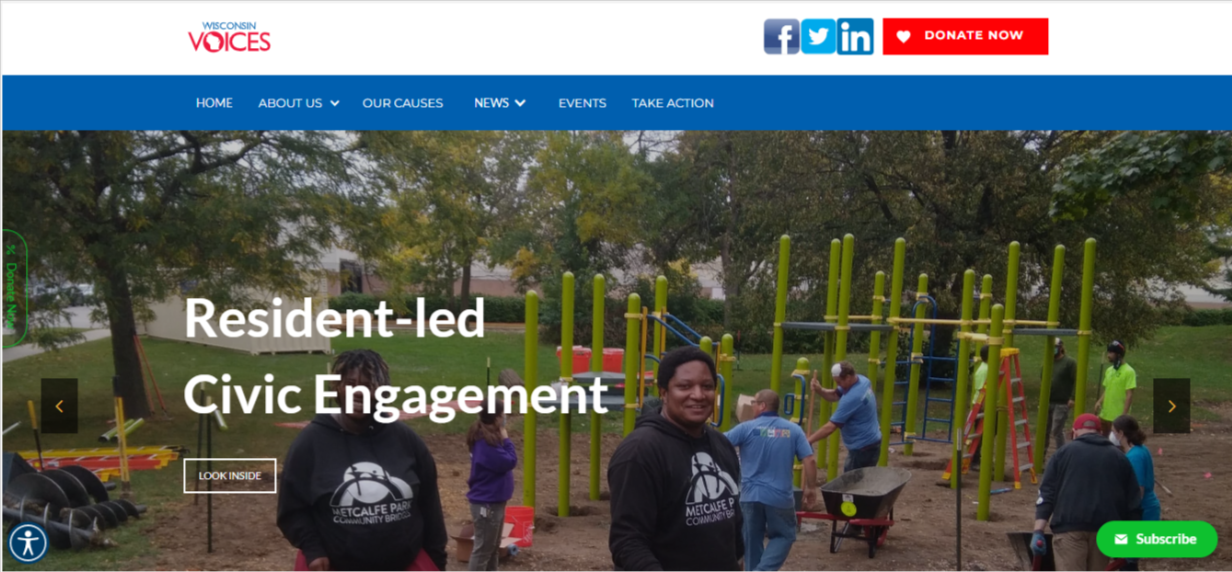

.jpg)





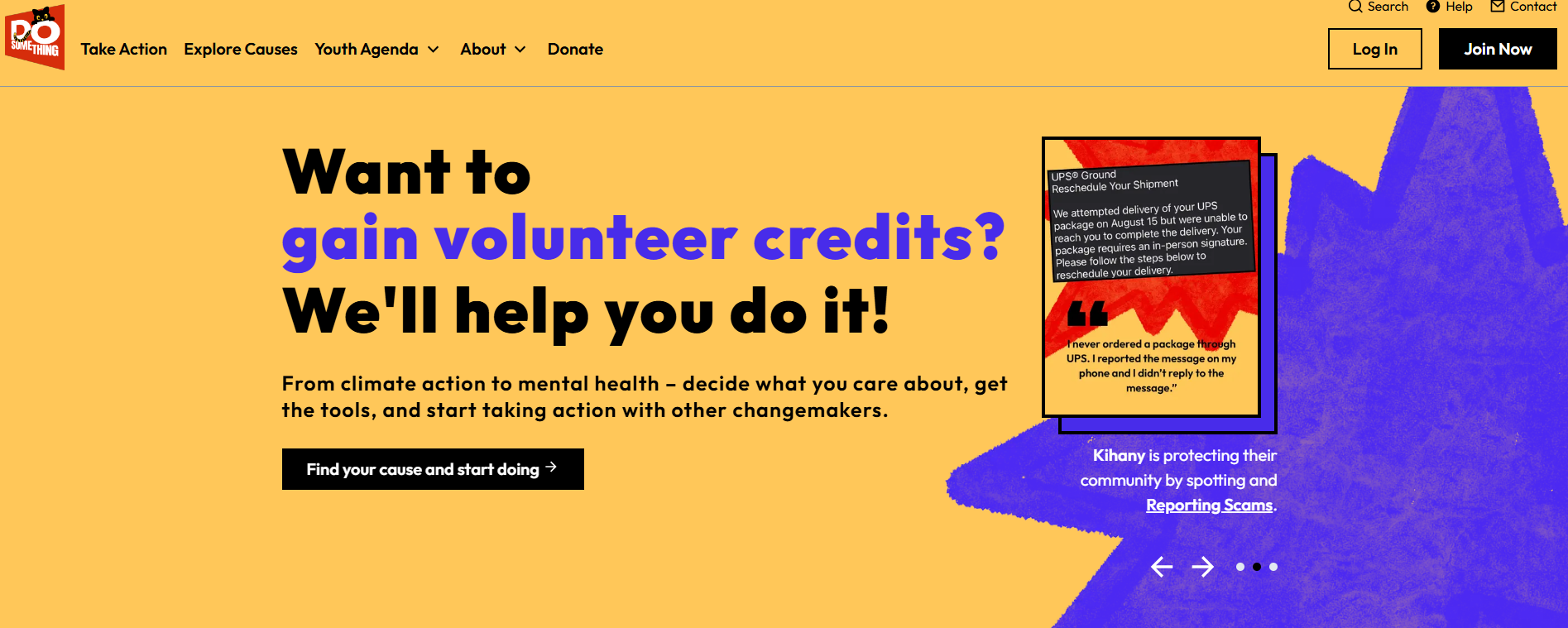




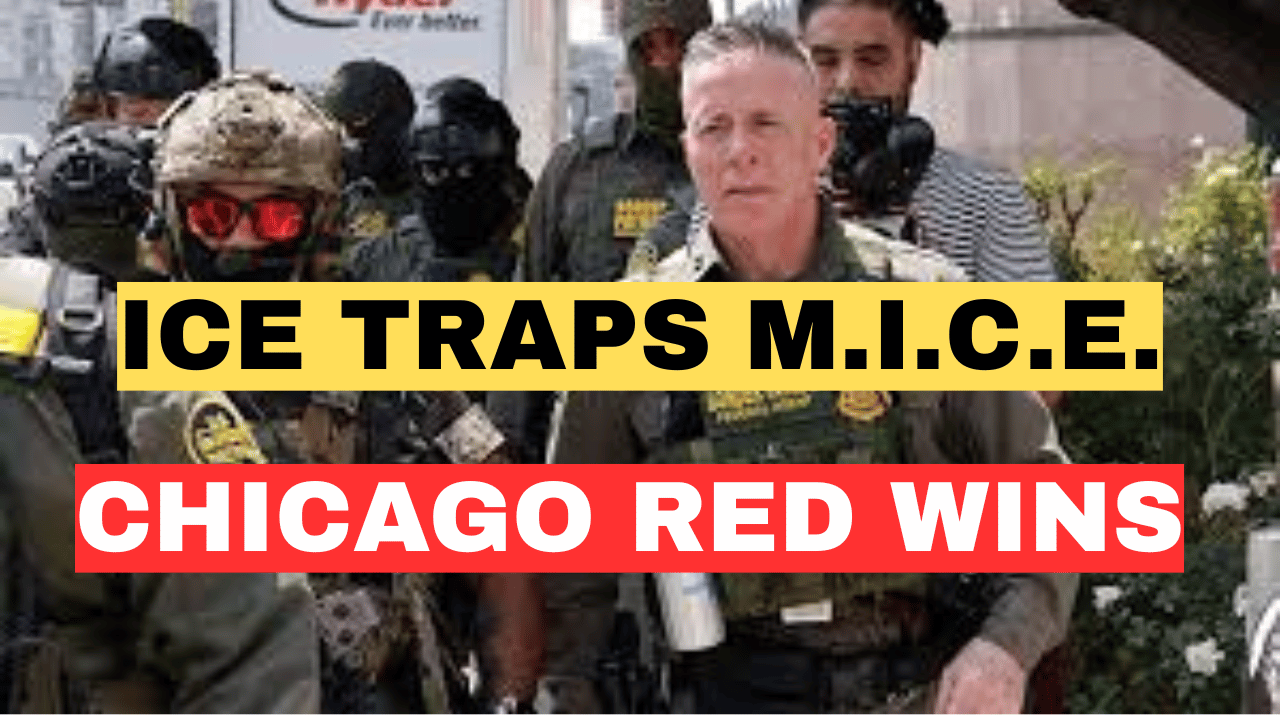

.jpg)


.jpg)
.jpg)

.jpg)


.webp)

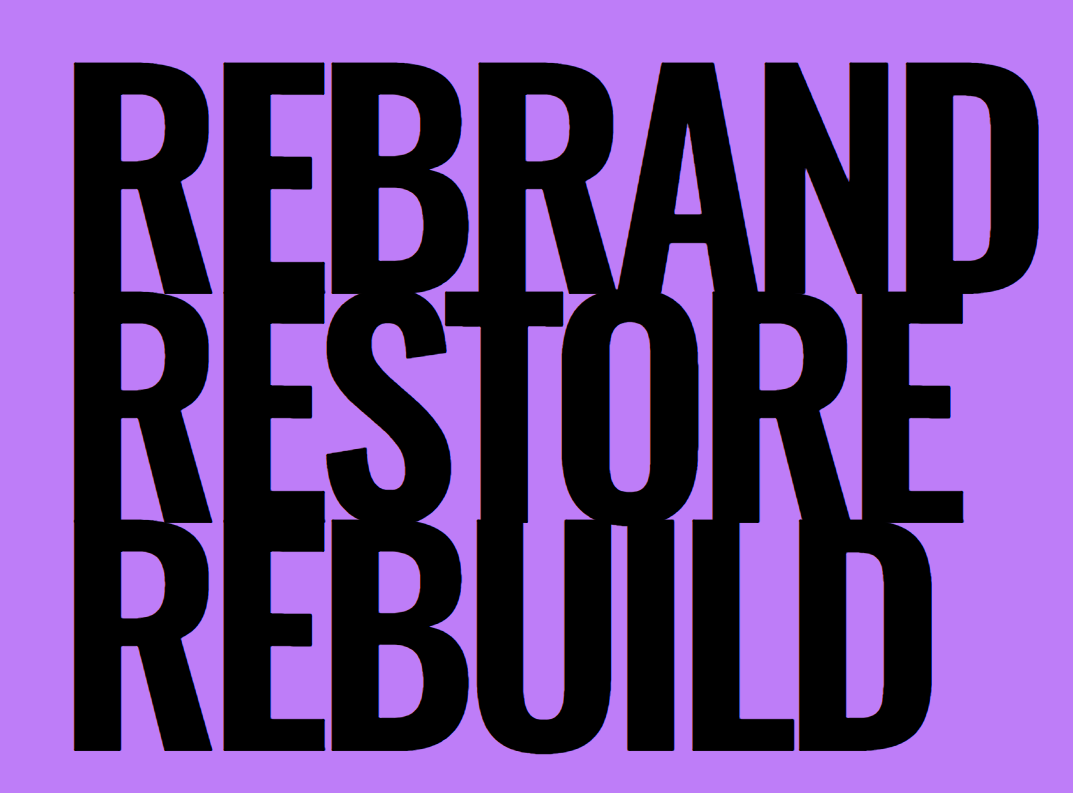



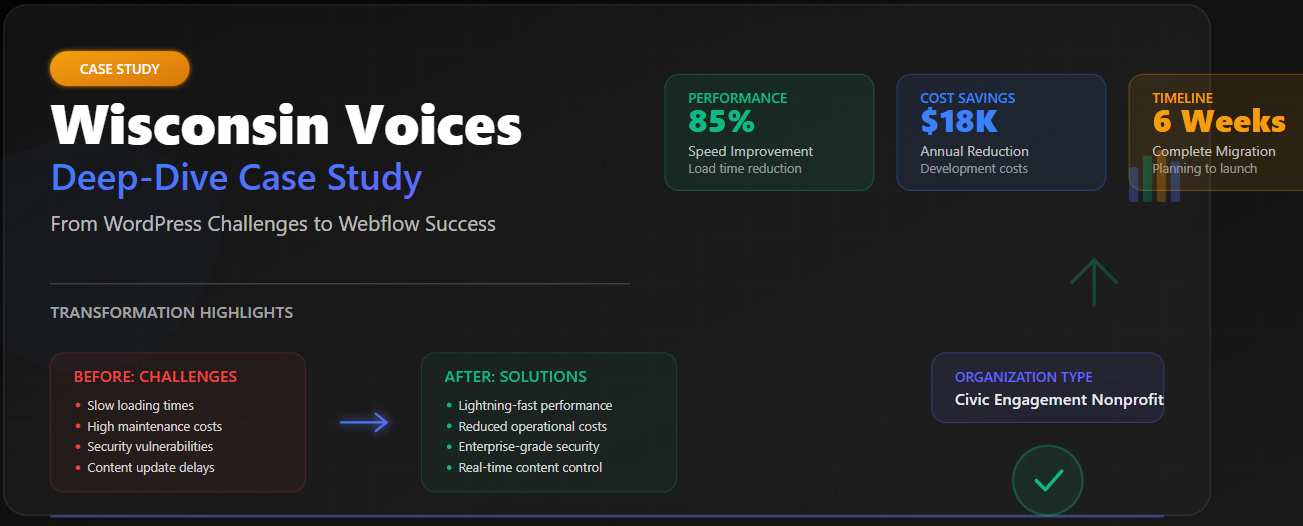
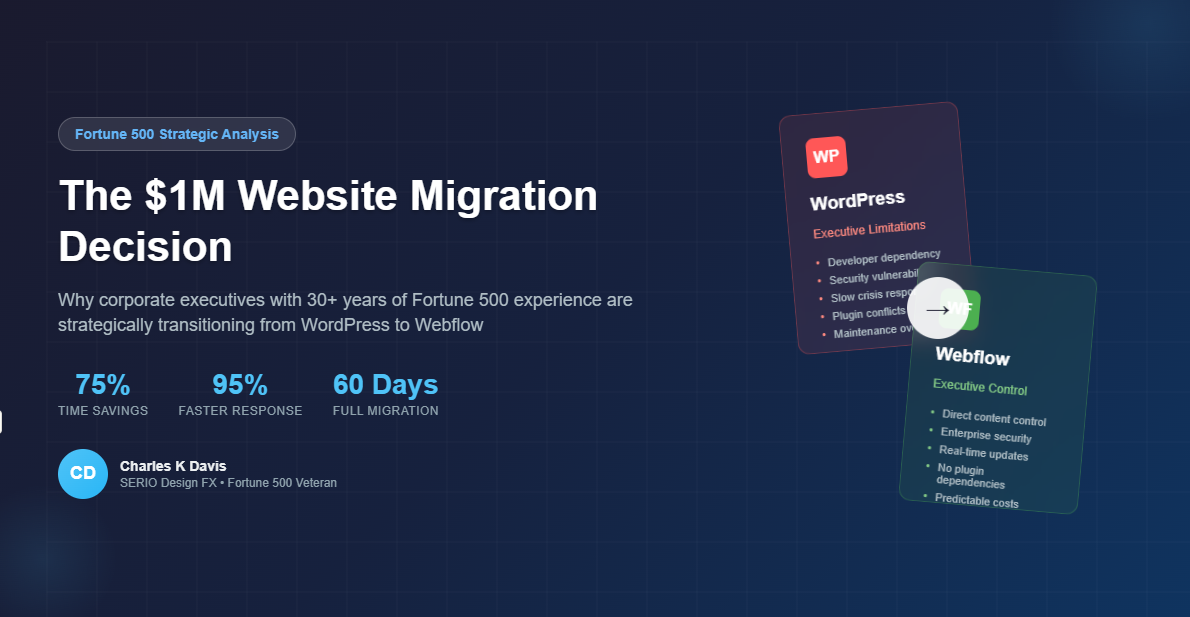












.png)

.png)





.png)





.png)






























